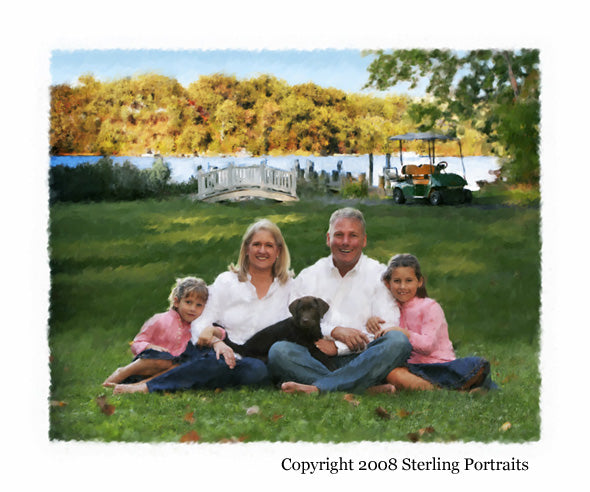Marketing Tips: Standing Out in the Digital Crowd – Part One
Originally Published November 2008
For portrait photographers, switching to digital means a lot more than just upgrading equipment. Digital means new challenges, as well as exciting new opportunities. In this first in a series, we’ll be looking at how you can get on top of the new technology wave, and ride it towards a successful future.

For a traditional portrait studio, the advent of digital technology has brought many changes, not all of them welcome. Changes include:
Studio owners say they are spending a lot of time on the computer, instead of doing photography.
You got into photography because you loved taking photographs, and now you’re spending huge chunks of your day on the computer, doing retouching work. During the film era, most studios outsourced retouching and finishing. For some reason, when darkrooms were replaced by computers, studios decided to take on the retouching themselves, doubling their workloads.
Digital photography means new competition from amateurs.
Professional-quality cameras are now affordable and commonplace, and many amateurs have decided to try their hand at portrait photography, as either a sideline or a full-time business. These “prosumers” are eating away at the low-end of studio profits. They don’t have studio overhead, so they’re practically giving away their work. You can’t compete with these folks on price. I suggest you don’t try to. Instead, we’re going to look at some alternatives that make prosumers a non-issue.
How to Survive the Digital Tsunami
The news is not all grim. In fact, you can take advantage of the new technology to bring in new business, and thrive. For many studios, digital has meant a huge increase in work hours. At the same time, business is dropping off as digital enables amateurs to steal your customers. I’d like to suggest a two-pronged strategy to help you deal with this two-fisted punch:
- Outsource and collaborate
- Go for the high end
Outsource and Collaborate
When Michael Redford decided to begin offering Painter portraits on canvas to his customers, he took a Painter class. He quickly realized that Painter was a great program, and that it was also very time-consuming. He decided to use my studio, A Work of Art, to outsource his Painter work. The decision to do so, he told me, was based on simple math. “Think about what your time is worth,” Redford said. “If you are worth, say, $100 an hour, does it make sense to cut your own grass, or to pay the neighbor’s kid $25 to do it? I’m only making money when I’m behind the camera. It doesn’t make sense for me to do my own Painter work.”
By outsourcing your non-photography tasks, you can add time-consuming services to your offerings without adding to your workload. Find collaborators who share your aesthetic, and partner with them. Using outside suppliers can be a better solution than adding to staff, since you only pay for services as they are needed.
Go for the High End
As traditional markets for portrait photography are swallowed up by amateurs, professional studios need to set their sights on a market segment they have not approached up till now. I’m referring to the market dominated by traditional oil painters who charge $5000 to $25,000 for a single portrait on canvas. Their dominance of this market is now being challenged by digital technology. You can offer images printed on canvas that look just like the real thing. Subcontracting the Painter work will add a few hundred dollars to your costs, but you will get that back many times over through print sales.
But don’t just take my word for it. In this article from Professional Photographer magazine, you can read about my collaboration with photographer Sterling Hoffman. From the article: “Paintings range in price from $2,640 to $22,000, depending on medium and size, and can cost as much as 66 percent (or $8,800) more than unpainted photographs.” Sterling’s sales of painted photographs done by my studio were about $100,000 last year.
Next time, we’ll continue to look at how you can put digital’s advantages to work for you.

Marketing: Standing Out in the Digital Crowd – Part Two


